Site Information: Peter’s habitat in the Beaumont Wilshire neighborhood of Northeast Portland has part sun to shade conditions and dry soil conditions
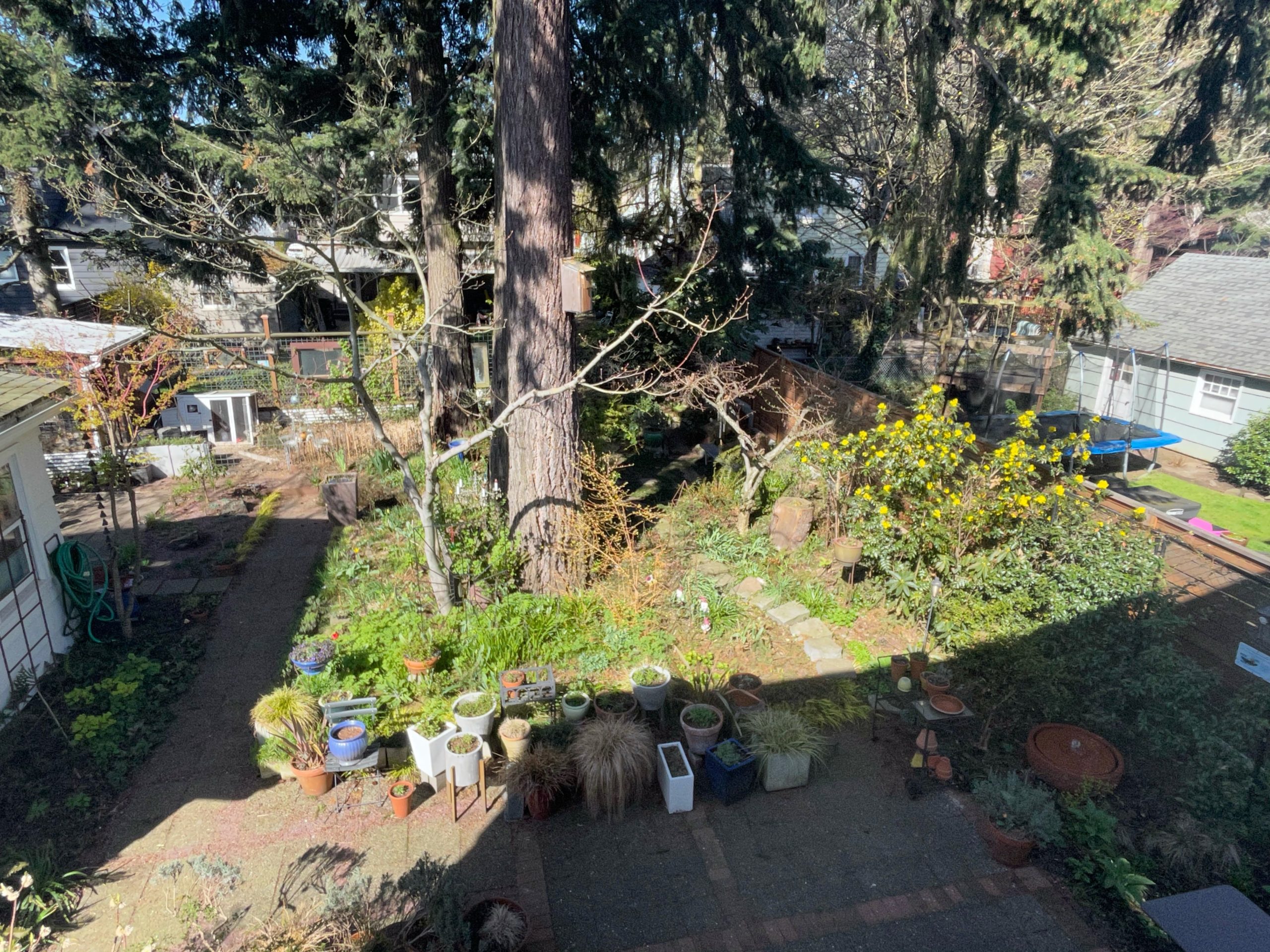
What inspired you to enroll in the Backyard Habitat Certification Program?
I have always had a soft spot for native plants, it makes total sense to me to replace the habitat we removed when we moved in and scraped the ground to build our homes. I would be doing something like this anyway being such a native plant-nerd, but this program provides a proven structure for my garden plans.
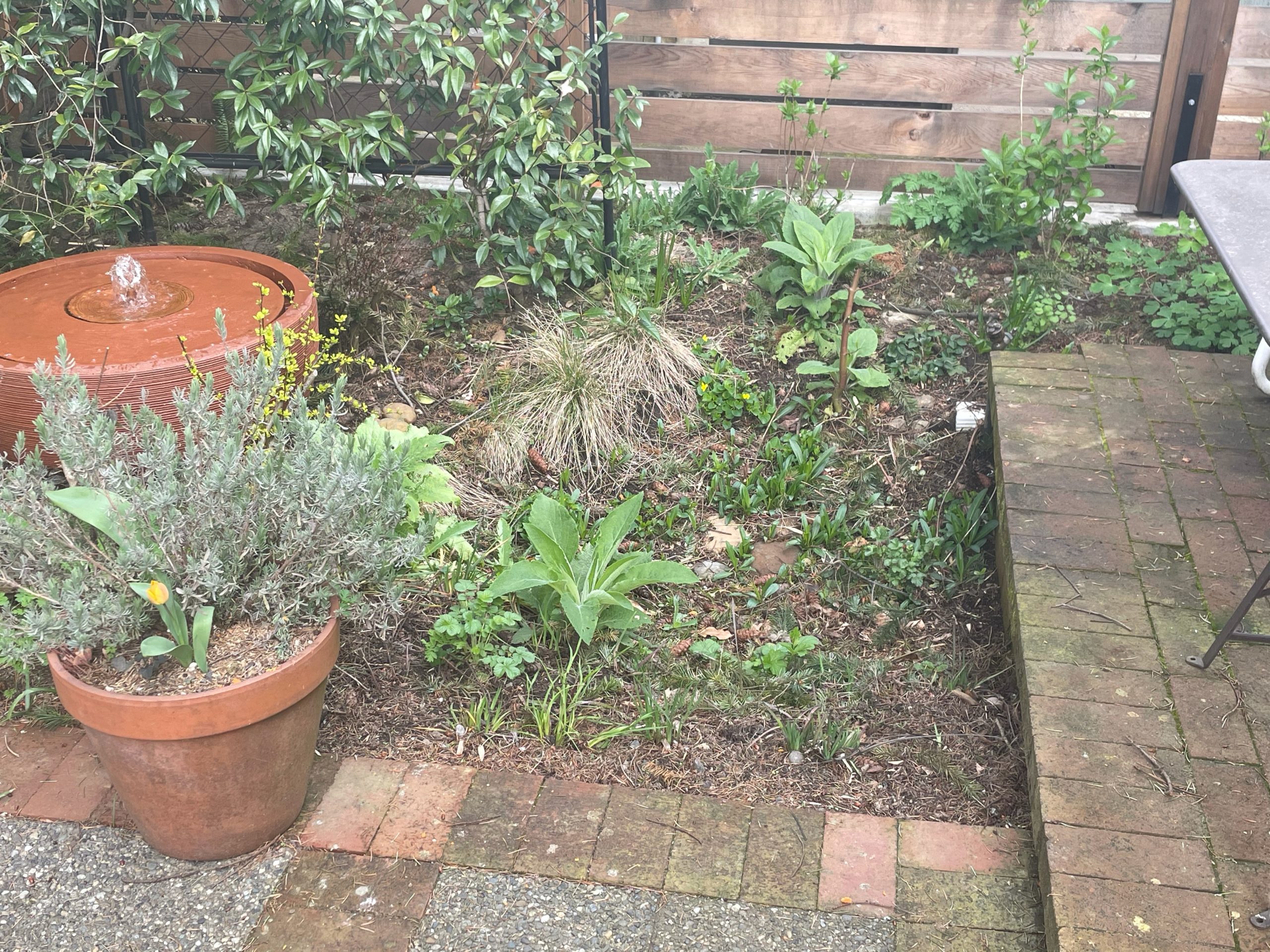
How would you describe your habitat?
I am trying to establish four zones in a very small area: a shady forest garden under four mature Douglas Firs; a meadow/forest edge; a rain garden; and a dry, mostly sunny zone. There are boundary areas that aren’t a focus, but I am trying to make them as native as possible.
I do my best to only select plants from the Portland Plant List, but sometimes the plant species I want is not available, but others from the same genus.
I use almost no herbicides. Because of the establishing plantings I cannot dig out selected weeds in some spots, notably the Italian arum, so I use a paintbrush and paint leaves with glyphosate herbicide. It’s a slow process and the plants take a while to die, but it is effective in the long term. For insect pests, mainly flies (I have chickens) I use diatomaceous earth and/or pyrethrum. I am very careful with that to ensure the native bees are not affected.
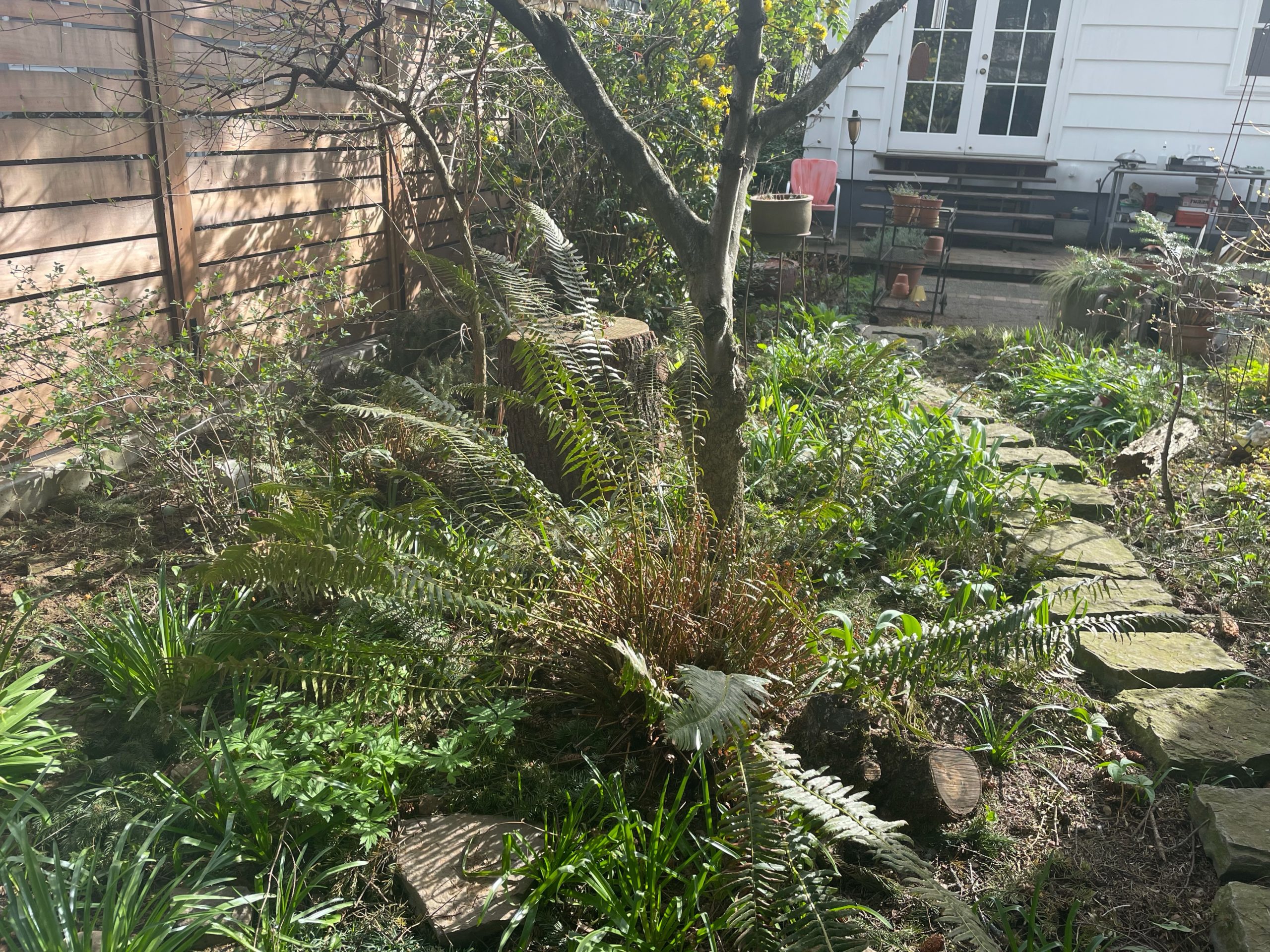
What are your top three favorite native plants and why do you love them?
Too hard a question. I delight in small flowers. Small delicate plants and flowers seem incongruous; how do they thrive when there are so many large enthusiastic plants all around them?
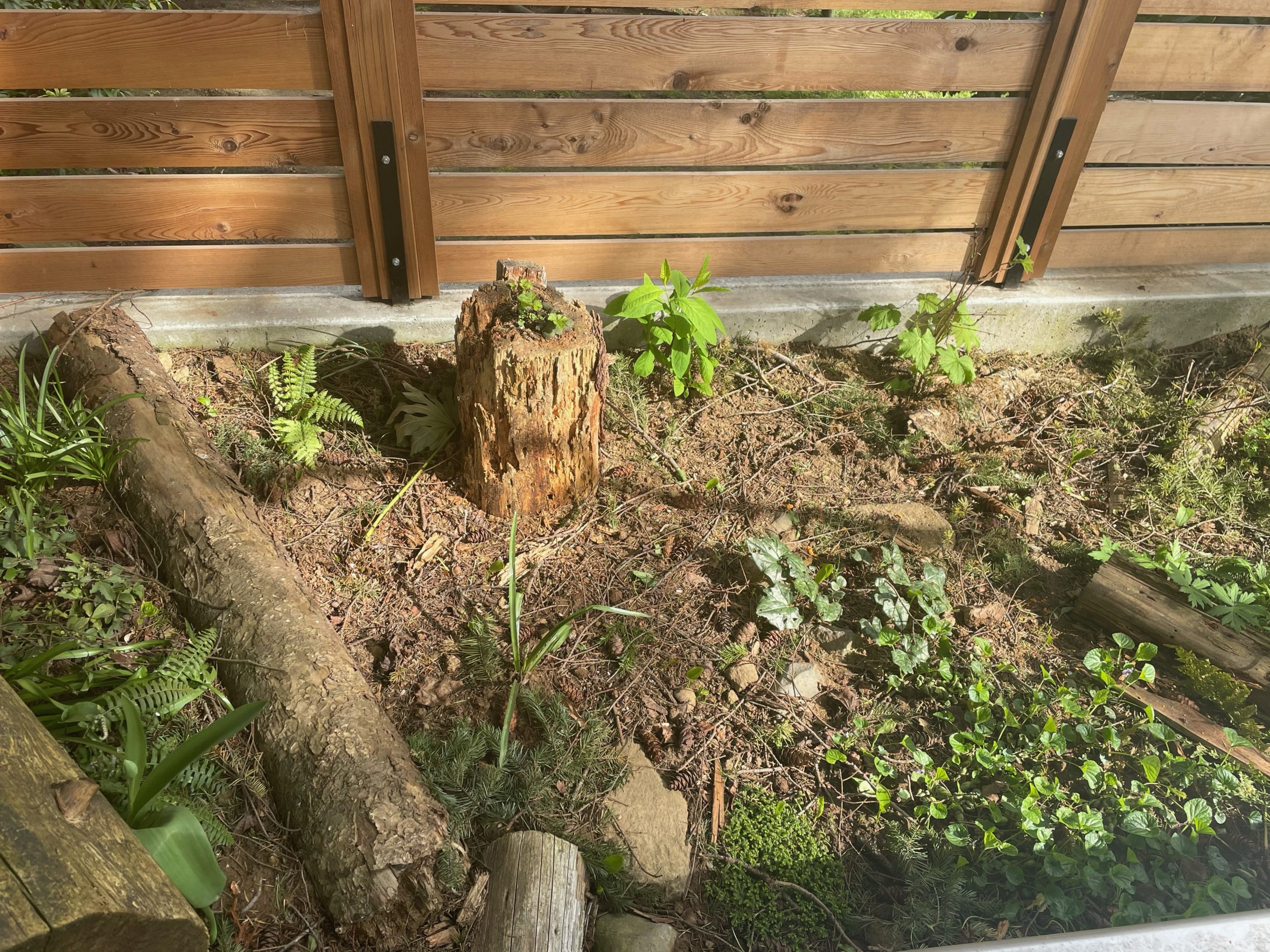
What changes have you observed as a result of creating habitat?
Since the conversion to native plants the variety of bird life that visits has increased. Where we used to get about six species throughout the year, mostly to the feeders, now it’s not unusual to get a dozen species in one day. Not bad for one sixteenth of an acre!
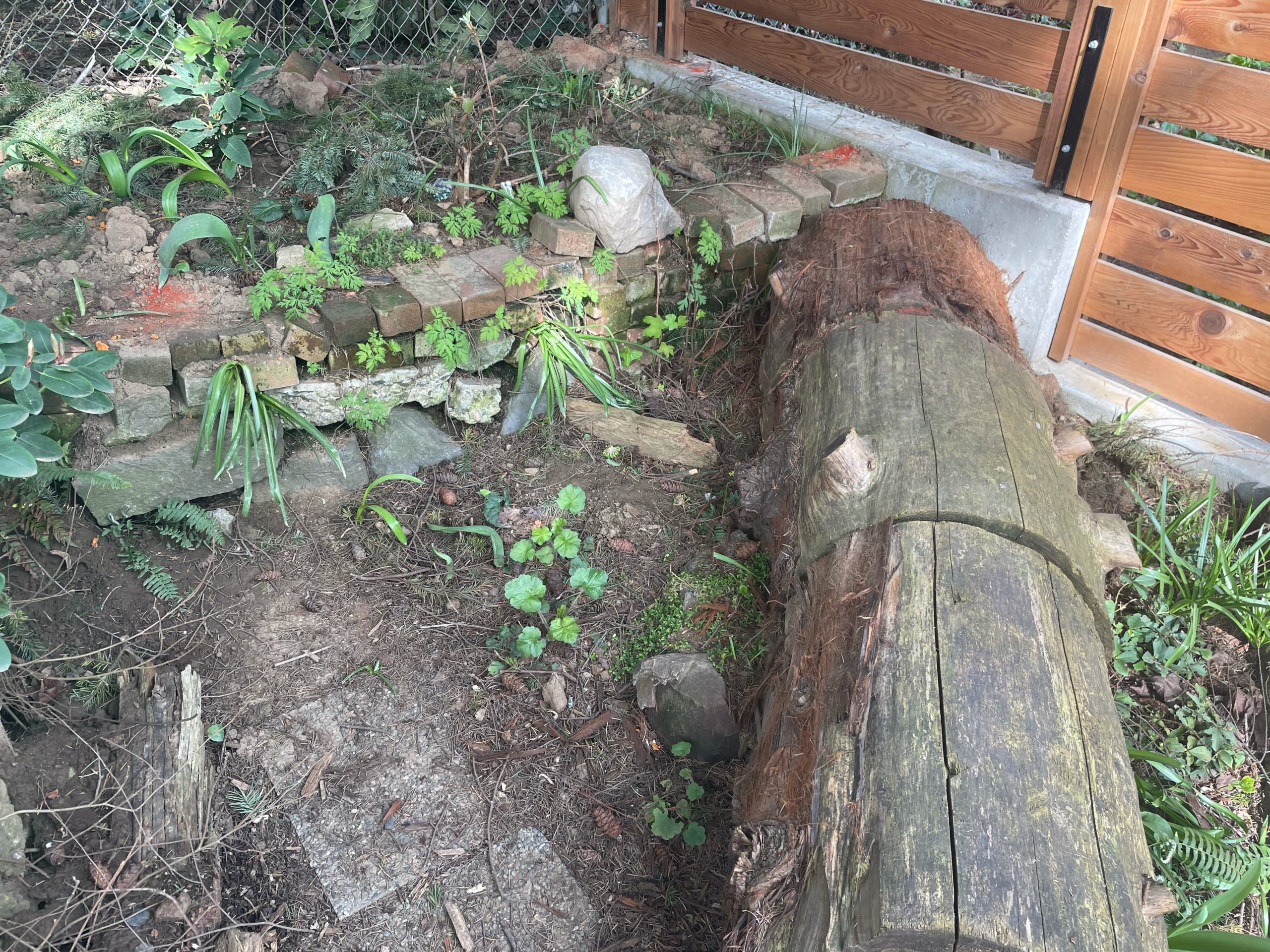
What were the two most significant challenges you encountered while creating habitat, and how did you address them?
This question is worded in the past tense, as if the challenges were entirely overcome!
Trying to get things to grow in the dry shade under mature trees is a challenge and one that is not going to go away. The selection of plants that naturally grow under Douglas Firs has made my job easier, and they thrive with the addition of extra water. The firs thoroughly suck the water away especially in hot windy conditions, made worse, I suspect, because they are an isolated stand of trees. If there was more of a forest around this stand the need for transpiration would decrease.
I started with pretty much nothing but the firs and bark dust so I had few weeds to contend with, a bit of English Ivy and the wrong sort of weedy Campanula. These I have controlled and keep at bay with vigilance. However the improved growing conditions have encouraged Italian Arum, which I tolerated until I became aware of its weed status. Now it has dug in and I am working hard to eradicate it.
What resources did you find especially helpful?
I get a lot of inspiration from nature. I regularly visit parks that feature the biomes that correspond to my garden. For example I got a lot of inspiration from Graham Oaks Savannah restoration park. I hadn’t realized just how beautiful a “mere grassland” could be. I now hike and visit parks all over the region studying the different plant communities.
- The booklet “Native Plants for Willamette Valley yards”, Metro.
- The Portland Plant List
The books:
- “Encyclopedia of Northwest Native Plants for Gardens and Landscapes” by Kathleen A. Robson, Alice Richter & Marianne Filbert, Timber Press 2008
- “Revised Plants of the Pacific Northwest Coast” by Pojar & Mackinnon, Lone Pine 2014
- “Wildflowers of the Pacific Northwest” by Mark Turner & Phyllis Gustafson, Timber Press 2006
The web sites:
- BackyardHabitats.org
- OregonFlora.org
- https://emswcd.org/wp-content/uploads/2013/10/Rain-Gardens-Guide.pdf
- https://www.wildflower.org
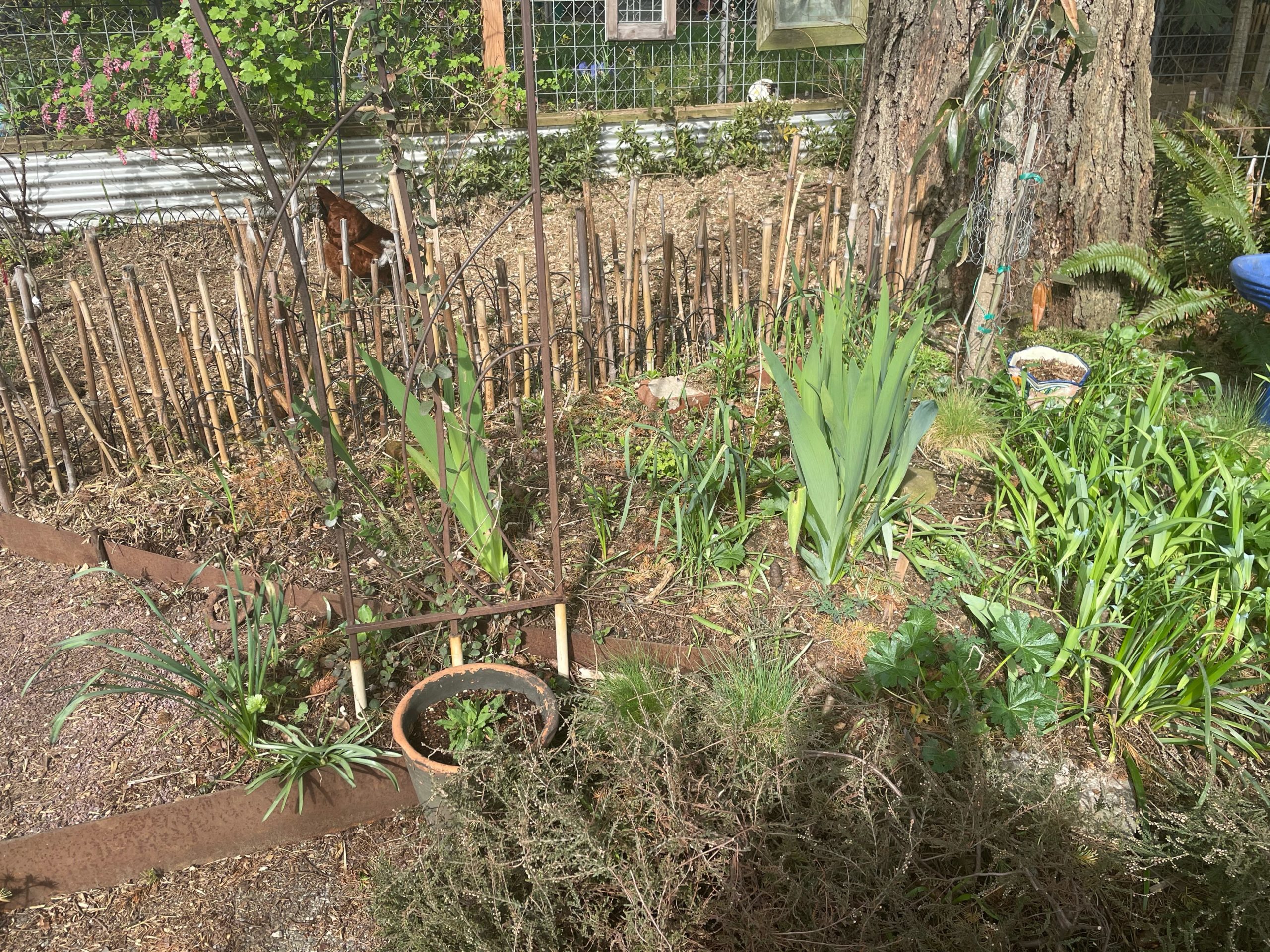
How do you enjoy your Backyard Habitat throughout the different seasons? What are its highlights in each season?
In every season, every day, I take multiple ambles thru the garden looking for new growth, flowers, fruit, signs of feeding, plants or combinations that are particularly beautiful and/or successful, and I’m always on the lookout for plants that need moving or(especially) patches that can take more plants.
I love having a beverage in hand and just sitting.
Spring is a mix of ups and downs. Delight when new growth begins and unexpected plants pop up. Disappointment when anticipated perennials don’t show or the weeds make an unexpectedly vigorous appearance.
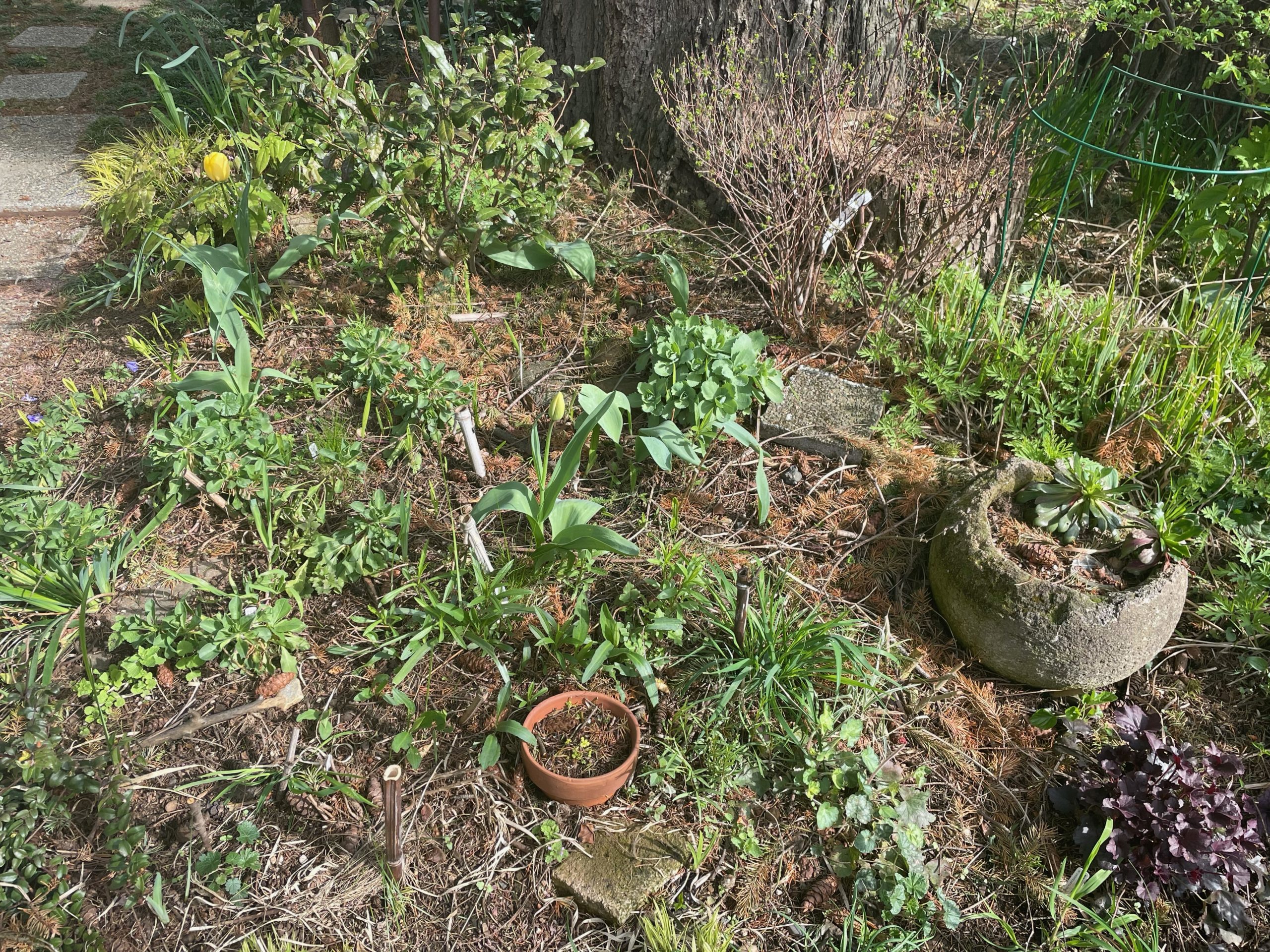
What part of your backyard habitat are you most proud of?
How quickly it was used by birds. It makes me realize just how starved our bird population is of their natural resources.
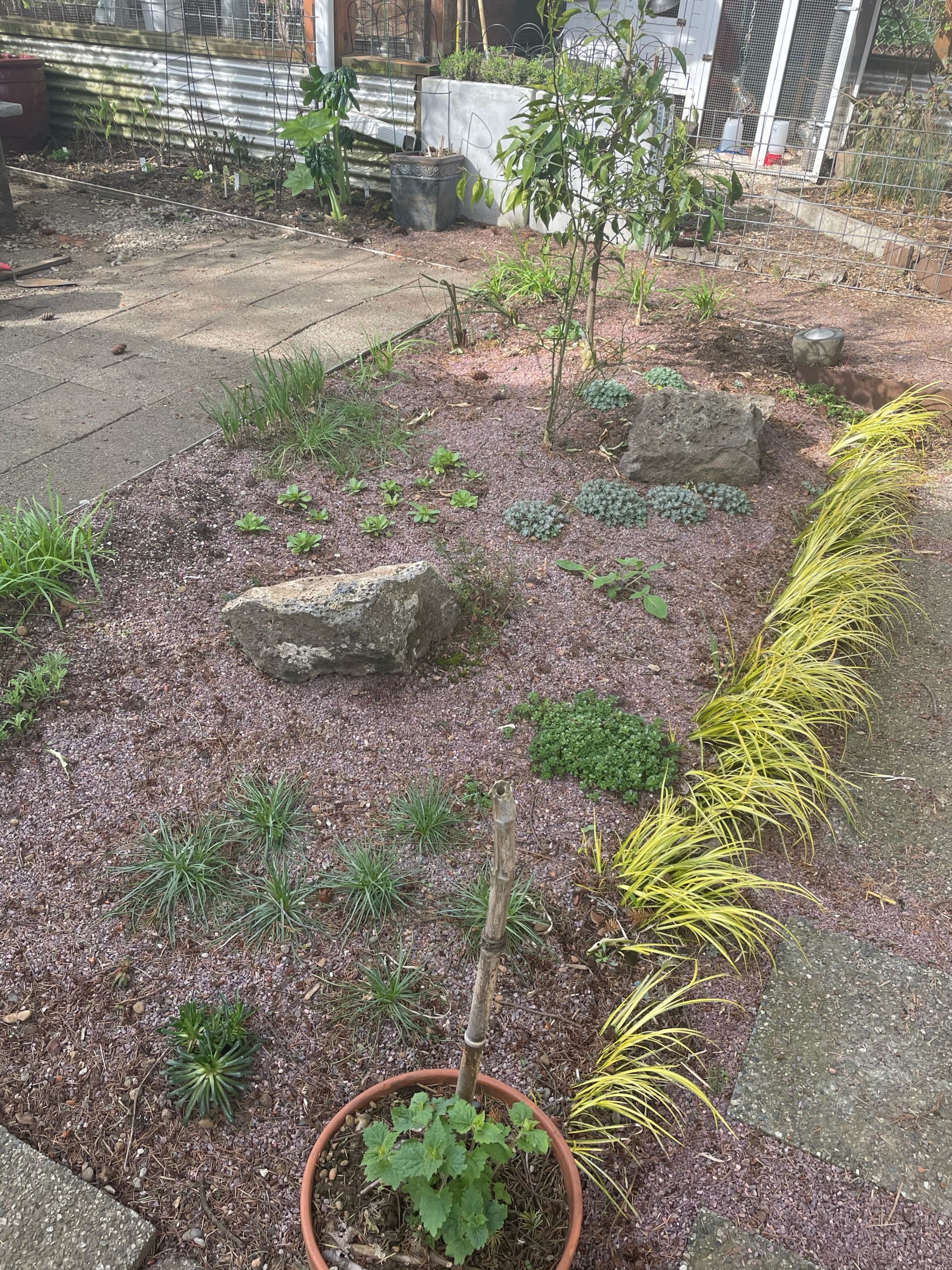
Is there anything else you’d like to add about your journey?
Will it ever end? Hopefully not.
